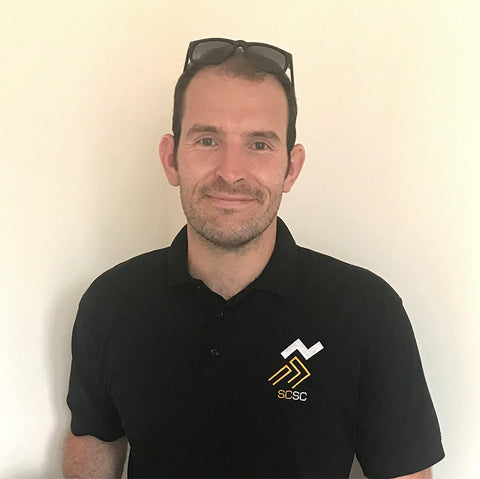
Last year was unknown territory for all of us regarding massage pre, during and post-race. I had a lot of work on my hands to devise an effective plan to help Rhys during the race. I was fortunate that Rhys had complete faith in me, which allowed me to experiment a little. Personally, I learnt a lot from last year, so when Rhys invited me back again this year, I already had lots of ideas on how to help him achieve more.
Last year, Rhys completed the race in 40 hours 47 minutes and 29 seconds. So this year is all about formulating a strategy that will enable Rhys to achieve a faster time than the previous year.
As a support crew member of the team, I will be helping out in all areas of the races but mainly concentrating on sports massage.
Sports massage helps improve symmetrical (ideal) muscle function by ‘resetting’ the tight areas, preventing imbalances and overuse injuries. Maintaining the flexibility and strength in the muscle through massage, enables Rhys to use the full range of motion in his joints to push harder, run faster and go further. Without it, the muscles shorten and become tight, putting him at risk for joint pain, strains, and muscle damage.
In the days leading up to the race we will follow a similar plan to last year. Each day Rhys will continue with his daily stretching routine and we will provide a very gentle leg massage, spending a little bit of extra time on any niggles or areas of tightness. We will also use this time to practise race situations, like preparing the body, hopefully limiting any potential surprises during the race.
On race day, during the drive to the start line, we will conduct a short and light pre-event massage. A massage can actually accomplish many of the same goals as a warm-up would. The goal is to increase your circulation, flexibility and mental clarity, preparing the muscles for action.
When it comes to nutrition and hydration, we hit some big highs and some big lows during last year’s race. However, one of the biggest changes to our nutrition strategy this year is a caffeine detox.
In the ten days leading up to the race, Rhys will starve his body from caffeine so that on race day it will have a much bigger impact on performance and give us a good push to the finish. Rhys has already been testing this theory out during training runs with some really positive results.
During the race, it’s vital that we allow frequent stops to provide Rhys time to cool down, re-hydrate and replenish food stores. We will also conduct shorter massage treatments as and when required. These are helpful to quickly restore energy levels, balance psycho-emotional state, prevent injury, cramps, spasms, and relieve pain in case of micro-trauma or chronic problems.
During last year’s race, we didn't have a scheduled stop plan. We just stopped as and when required, usually around every 2-miles. This wasn’t the most effective strategy as some stops weren’t necessary and sometimes we stopped too long.
This year, we will be working on a three-stop rotation. This will consist of two stops, each for 5-minutes maximum for fluids, food and running repairs, and a third 15-minute stop for a sit-down, cool-down and refocus. By tightening up the scheduled stops we should be able to save time without having to make Rhys run faster.
I have been reading two books recently, Endure: Mind, Body and the Curiously Elastic Limits of Human Performance by Alex Hutchinson and Black Box Thinking by Matthew Syed. There are a few ideas within these books that I’d like to try out, but I would like to keep a few things a surprise so I will update you on the effectiveness after this year’s race. So, watch this space!
Try this brutal David Goggins workout you can do anywhere. No gym, no excuses. Build grit and endurance. Download the free workout PDF now.